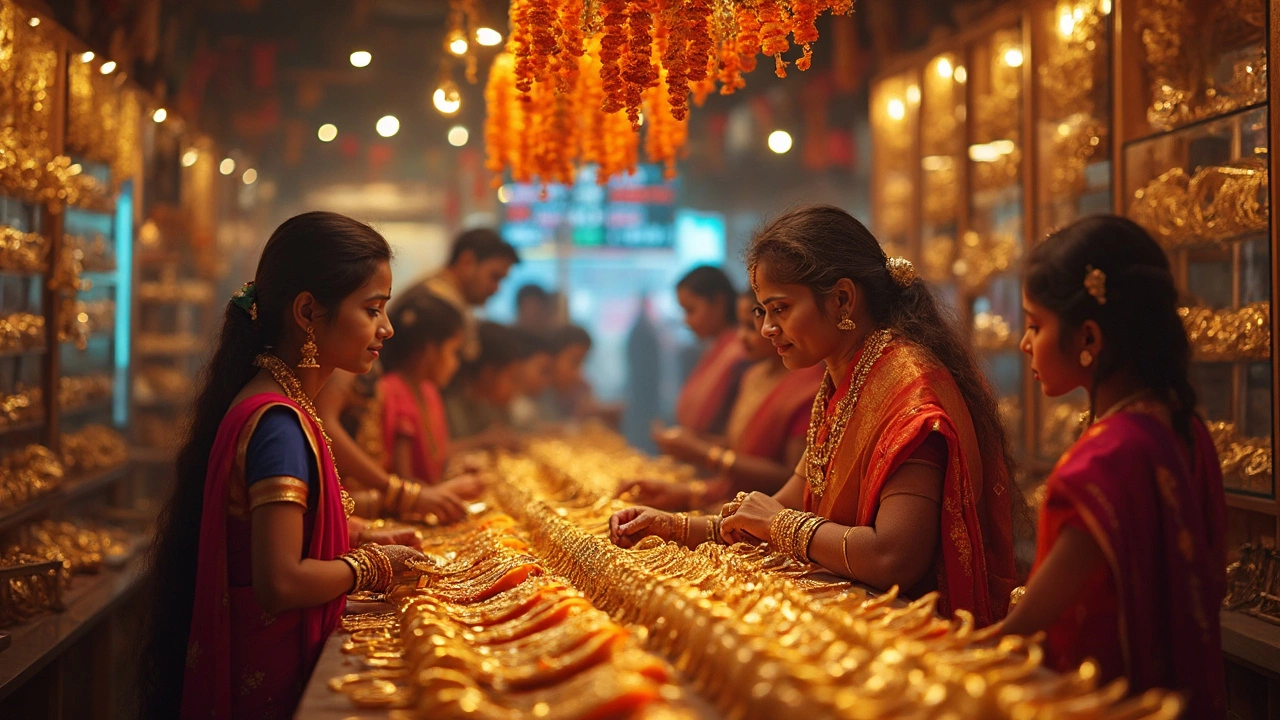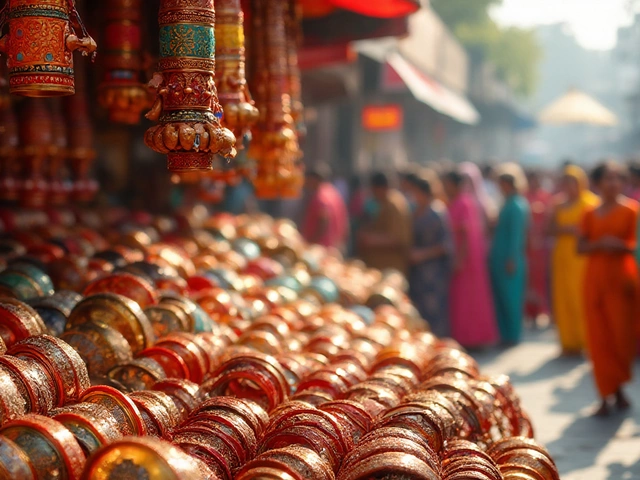Gold in USA vs India: What Really Changes?
Thinking about buying gold but not sure if the rules in the US are the same as in India? You’re not alone. The two markets look similar – shiny metal you can wear – but the numbers, stamps and taxes can feel worlds apart. Below you’ll get the basics you need to feel confident whether you’re shopping on Fifth Avenue or a street market in Jaipur.
Price, Purity and Hallmarks
First up, price. In the US gold is quoted per troy ounce in US dollars, and the spot price moves every second on global exchanges. In India the same spot price is converted to rupees, then a 3 % to 4 % making charge is added by the jeweller. That’s why you’ll see a higher quoted price per gram in India even though the underlying metal is the same.
Purity works a bit differently too. American gold is usually stamped 24K (99.9% pure) or 22K (91.6% pure) for designs that need extra strength. The hallmark will say “24K” or “22K” and often include the “.999” fineness. In India the most common gold is 22K, marked “22K” or “916” (meaning 91.6% pure). 24K is also sold, but it’s less common for everyday jewellery because it’s softer.
Both countries use hallmarks to guarantee purity, but the authorities differ. In the US the hallmark is a simple stamp from the Federal Trade Commission (FTC) that the item meets advertised karat. In India the Bureau of Indian Standards (BIS) issues a 4‑digit hallmarks like “22K-916” plus a BIS logo. When you see the BIS logo, you know the piece was tested by a government lab.
Taxes, Buying Channels and Tips
Taxes are a big deal. In the US you pay a sales tax that varies by state – 6 % in some places, up to 10 % in others. If you’re buying as an investment, you might also owe capital‑gains tax when you sell. In India you pay a 3 % GST on gold purchases, plus a small making charge that the jeweller adds. No capital‑gains tax applies if you hold the gold for more than three years.
Where you buy matters. US buyers often use online platforms that show real‑time spot price and lower making charges. Indian buyers still rely heavily on local jewellers, especially for festivals, because they offer designs that match cultural preferences. Either way, ask for a certificate that shows the karat, weight and hallmark.
Quick checklist before you click ‘buy’:
- Check the price per gram/ounce and add the making charge.
- Make sure the stamp matches the declared purity (24K, 22K, 916, etc.).
- Look for the BIS logo in India or an FTC compliance stamp in the US.
- Factor in sales tax or GST to your budget.
- Buy from a reputable dealer who can give you a return policy.
Got a favorite design in mind? Remember that Indian jewellery often uses 22K gold set with diamonds or colored stones, while US pieces may favor 14K or 18K for durability. Choose the karat that fits the style you love and the way you plan to wear it.
Bottom line: the metal itself doesn’t change, but the price, purity stamp and tax rules do. Knowing these differences lets you compare apples to apples and get the best bang for your buck, no matter which side of the globe you’re on.
Gold Price Comparison USA vs India: Where Is It Cheaper to Buy Gold?
Thinking about buying gold? Learn how gold prices compare between the USA and India. This article breaks down taxes, import duties, and all the extras that affect what you actually pay. Get straight facts, cost breakdowns, and practical advice if you're wondering where your gold dollars will stretch further. Perfect if you're planning to buy or bring gold across borders.





